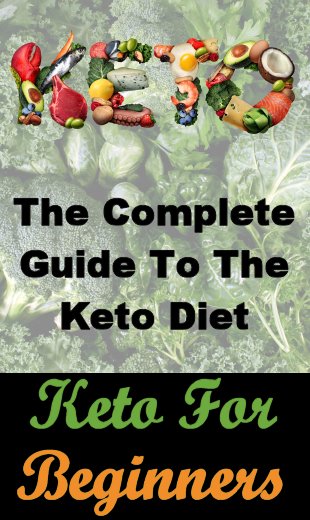Selenium 101 – Benefits, Risks, And Sources
This article addresses:
- What selenium is.
- What benefits it confers.
- The risks of being deficient.
- How much you need per day.
- The risks of consuming too much.
- A list of natural food sources.
What Is Selenium?
Selenium (Se), named after the Greek word for “moon”, is one of the elements in the Periodic Table (its atomic number is 34), and it’s one of the non-metallic elements, first discovered in 1817.
Commercially, selenium is used in the making of glass and pigments, as well as in electronics (e.g. semiconductors, photocells), although silicon has tended to replace those uses.
Of more relevance here, however, is its requirement, in trace amounts, by our bodies, which need it to help our cells function, amongst many other biochemical processes.
And while we do need this mineral, too much of it can be toxic, as you’ll see further below.
Selenium Health Benefits
Although, like many minerals, we only require selenium in trace amounts, that doesn’t mean it has little to offer:
- Anti-inflammatory effects
- Antioxidant properties that help minimize free radicals, especially with respect to the creation of glutathione
- Detoxification
- Fertility, in terms of improved sperm motility, although it’s also essential for female fertility too
- Hair health
- Heart health
- Immune system – some suggest that selenium can mitigate the complications from infections such as influenza, which is actually what kills most people who get the ‘flu, rather than the ‘flu virus itself)
- Skin health
- Thyroid health
Signs Of Selenium Deficiency
Deficiency of any mineral or vitamin is not necessarily an all or nothing affair – it’s a spectrum, so you might be mildly deficient, or severely deficient (which is rare in countries such as the USA).
However, just because few people suffer from severe deficiencies does not mean that everybody is getting enough of this mineral, especially when you consider that the Standard American Diet typically leaves people short of many of the necessary micronutrients (including selenium).
And some people are more at risk of a deficiency than others, including:
- Premature babies
- The elderly
- Those taking certain statin drugs (e.g. those that deplete selenoproteins)
- Those with chronic health problems
- Those with immune system issues (including those suffering from AIDS and/or HIV)
The following represent some of the early warning signs that you may not be getting enough selenium:
- Asthma. Studies have shown that asthma can worsen if you are deficient in selenium.
- Cognitive Functions. You may experience brain fog if you don’t get enough of this mineral.
- Energy. Fatigue is one common sign of a deficiency of selenium.
- Hair. You may find you start losing hair, or you may find that its quality and tone changes.
- Immune System. Too little of this mineral can weaken your immune system, rendering you more susceptible to infections (e.g. colds) as well as auto-immune diseases.
- Other Deficiencies. Studies have shown that selenium deficiency can also cause a deficiency in other minerals such as calcium, iron, magnesium, and zinc.
- Pain. This is usually experienced as muscle pain or weakness.
- Skin. Discolouration can occur, both of the skin and your fingernails.
- Thyroid. Insufficient selenium can cause dysfunction in your thyroid gland, which looks a lot like hypothyroidism. (Your thyroid helps to regulate your metabolism, which has a direct effect on your weight.)
Needless to say, selenium deficiency is not the only cause of the above problems.
There is also emerging research that selenium deficiencies may explain why some people are more prone to viral infections than others.
A recent article by Richard Sexton states that “the only people that can be infected by the 2019-n Coronavirus have less than 98.7 µg/L of Selenium in plasma or serum. Those who have enough Selenium are immune to this and all other enveloped viruses.”
It turns out that this does not only apply to 2019-n Coronavirus, but to any of the so-called RNA-enveloped viruses (e.g. Ebola and at least some influenza viruses).
Selenium has also been shown to:
- Increase the chances that the virus will remain inactive (or, at least, less active) and therefore cause you less (or no) harm.
- Inhibit the ability of the virus to replicate.
- Reduce the ability of the virus to mutate into a more virulent form.
Clearly more research needs to be done on this but it could be a significant breakthrough in the prevention and/or treatment of many infections.
How Much Selenium Do You Need?
These are the official recommended amounts and upper limits:
| Life Stage | Recommended Amount |
Upper Limit |
| Birth to 6 months | 15 mcg | 45 mcg |
| Infants 7 – 12 months | 20 mcg | 60 mcg |
| Children 1 – 3 years | 20 mcg | 90 mcg |
| Children 4 – 8 years | 30 mcg | 150 mcg |
| Children 9 – 13 years | 40 mcg | 280 mcg |
| Teens 14 – 18 years | 55 mcg | 400 mcg |
| Adults 19 years and older | 55 mcg | 400 mcg |
| Pregnant teens and women | 60 mcg | 400 mcg |
| Breastfeeding teens and women | 70 mcg | 400 mcg |
Note:
- These numbers represent the total daily intake of selenium, including from foods and dietary supplements.
- The units specified above are micrograms – not milligrams or grams. (There are one million micrograms in one gram.)
Symptoms Of Selenium Toxicity
If you are getting too much selenium, then you may experience:
- Alopecia or a rapid increase in hair loss
- Bad breath
- Cirrhosis of the liver
- Cognitive function decline (e.g. trouble remembering things and general brain fog)
- Fever
- Fingernail damage
- Irritability
- Kidney problems
- Nausea and other gastrointestinal issues
- Tremors
Notice how some of these are the same as being deficient in this mineral?
That’s largely because, as with many other things, balance is key, which is why it’s important to stay within the recommended ranges.
Foods Rich In Selenium
The following are all good sources of selenium:
- Beef liver
- Brazil nuts
- Brown rice
- Cashew nuts
- Chicken
- Cod
- Cottage cheese
- Eggs
- Grass-fed beef
- Halibut
- Lentils
- Mushrooms (especially shiitake)
- Navy beans
- Oats
- Oysters
- Salmon
- Sardines
- Shrimp
- Sunflower seeds
- Tuna
- Turkey
- Yoghourt (plain)
Of these, Brazil nuts are the best source – just a couple of nuts per day will give most people all they need.
When it comes to fish, you need to be careful that you buy those are are as uncontaminated as possible (because mercury is present in many fish these days), such as:
- Wild-caught Alaskan salmon
- Yellowfish tuna, which has been caught using Pacific troll or pole and line methods
Conclusion
Selenium is probably one of the minerals we need every day that many people have never heard of, and that’s a shame because it’s essential to our health, and as with many other minerals and vitamins (e.g. magnesium, vitamin D), it’s likely that a lot of people are not getting enough of it.
As you can see from the above article, it provides many benefits, can cause many problems if you don’t get enough (or too much), and it’s easy to get naturally, if you eat the right foods. (And if you really cannot obtain your selenium from your diet, then high-quality organic selenium supplements are available – I use a liquid one because it offers better bioavailability.)
Additional Resources
These are suggestions for those who wish to delve deeper into any of the above:
- Liquid Selenium Supplement (which is the one I use)







